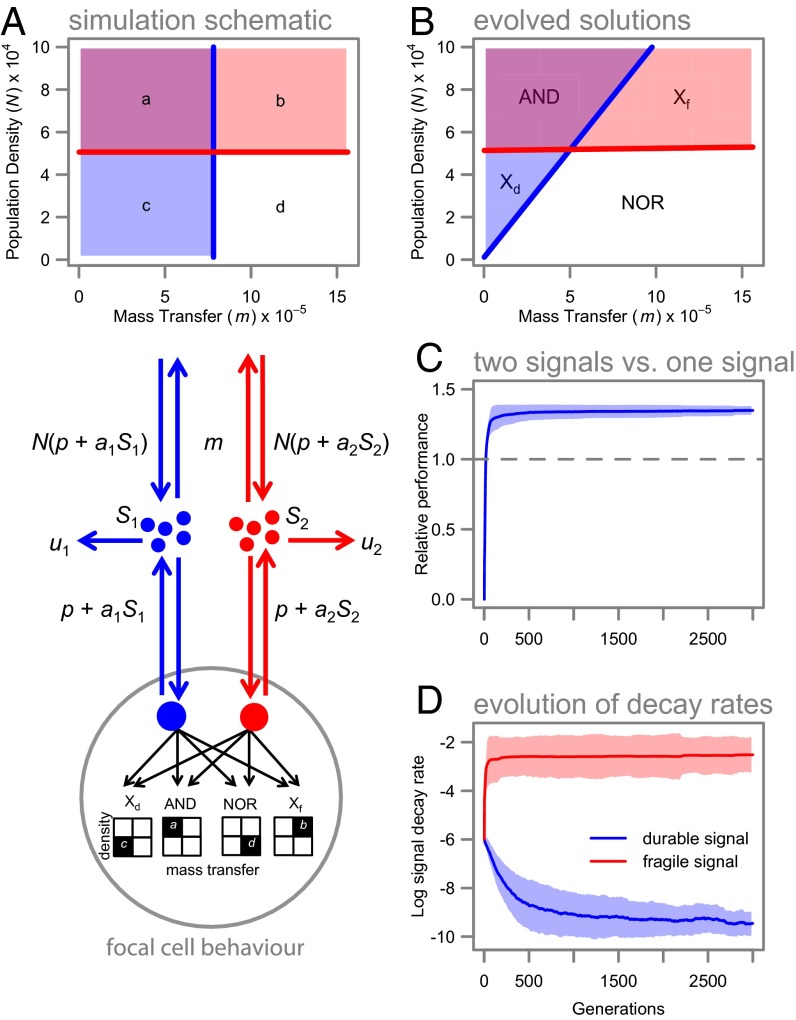Fig. 2.
Multiple signals enhance fitness in evolving in silico simulations. (A) Schematic model of agent-based simulation structure. In silico populations evolve in environments characterized by four distinct regimes (a–d) of density and mass transfer, each requiring a distinct pattern of gene expression. (B) The behavior (gene-expression pattern) of the best performing clone in our simulations, with colors corresponding to the target environments in A. The use of multiple signals allows individuals to approximately map their gene expression to the different environments. Logic gates for each regulon are also indicated (Xf indicates “exclusive fragile” and Xd indicates “exclusive durable” gates). (C) The performance of a two-signal system, relative to the theoretical maximal performance of a single-molecule system (dashed line) when environments are fluctuating. Values shown are means ± 1 SD. (D) Signal-decay properties quickly diverge in the two-signal case. Values are log10 of the signal-decay rate ± 1 SD. See SI Text, Simulation Model for full details of the simulation procedure.

